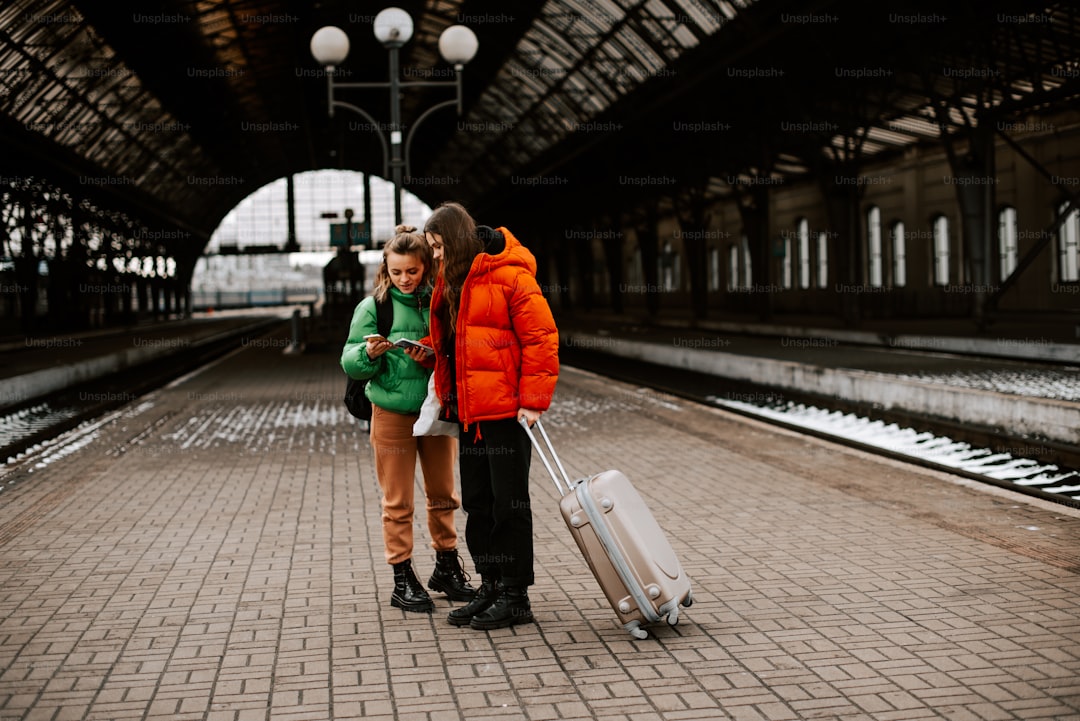Nomadic Minimalism and Green Travel Building a Sustainable Community

Introduction
The modern digital nomad is no longer defined solely by the ability to work from anywhere with a laptop and Wi‑Fi. A growing segment of the community is asking deeper questions about the impact of constant movement on the planet, on local cultures, and on personal wellbeing. The answer is emerging in a lifestyle that blends nomadic minimalism with green travel and the intentional creation of sustainable communities on the move.
This article explores how the principles of minimalism can be married to ecological travel practices, and how those combined values can be the foundation for thriving, low‑impact communities that travel together, share resources, and leave a positive footprint wherever they settle, even if only temporarily.
The Philosophy of Nomadic Minimalism
Less is More, Everywhere
Minimalism is often presented as a decluttering exercise for a fixed home. For a nomad, the concept expands to every aspect of life: the gear you carry, the digital tools you depend on, the relationships you nurture, and the habits you develop. The goal is to reduce excess, focus on function, and free mental space for creativity and connection.
Key ideas include:
- Intentional ownership – keep only items that serve a clear purpose or bring genuine joy.
- Mobility first – choose gear that is lightweight, multi‑purpose, and easy to repair.
- Digital streamlining – consolidate apps, cloud storage, and subscriptions to avoid digital clutter.
- Experiential focus – prioritize experiences over possessions, especially when those experiences involve learning about sustainability.
Why Minimalism Matters for the Planet
Every extra item you own has a hidden environmental cost: raw material extraction, manufacturing energy, transportation emissions, and eventual waste. By consciously limiting what you own, you directly reduce the demand for resource‑intensive production. Moreover, a lighter load encourages the use of low‑impact transportation such as bicycles, public transit, or walking, further decreasing carbon emissions.
The Mindset Shift
Transitioning to nomadic minimalism is not just a checklist; it is a mindset shift. It requires:
- Self‑audit – regularly assess what you truly need versus what you keep out of habit.
- Value alignment – ensure that each possession aligns with your personal values of sustainability, freedom, and community.
- Adaptability – accept that needs will change as you move through different climates, cultures, and stages of work.
Core Principles of Green Travel
Green travel is the practice of moving from place to place while minimizing ecological impact and supporting local ecosystems. The core principles are:
- Carbon awareness – understand and offset the emissions associated with each leg of travel.
- Local integration – engage with the community, respect local customs, and support locally owned businesses.
- Resource stewardship – conserve water, energy, and waste wherever you stay.
- Education and advocacy – use your travel experiences to spread awareness and inspire others.
When combined with minimalism, these principles become more achievable because a lighter lifestyle naturally requires fewer resources.
Building a Sustainable Community on the Move
What Is a Sustainable Nomadic Community?
A sustainable nomadic community is a group of individuals who share a common purpose of living lightly, traveling responsibly, and supporting each other’s personal and professional growth. The community can be fluid – members join and leave – but the core values remain constant.
Benefits of Community
- Shared resources – co‑owning gear, tools, and supplies reduces duplication.
- Collective purchasing power – group bookings, bulk food purchases, and shared subscriptions lower costs and environmental impact.
- Emotional support – traveling solo can be isolating; a community offers companionship and safety.
- Skill exchange – members can teach each other sustainable practices such as solar setup, composting, or zero‑waste cooking.
Forming the Community
- Define a clear mission – write a short statement that captures your focus on minimalism, green travel, and community.
- Identify core values – transparency, respect for locals, low‑impact living, continuous learning.
- Create a digital hub – a Slack, Discord, or Matrix server where members can communicate, share resources, and plan meet‑ups.
- Set expectations – establish guidelines for resource sharing, waste management, and contribution to communal projects.
- Invite diverse skills – seek members with backgrounds in renewable energy, permaculture, remote work tools, and cultural mediation.
Community Structures
- Co‑living pods – temporary shared housing such as co‑working spaces, hostels, or eco‑villages where members split rent and utilities.
- Travel caravans – groups traveling together in vans, cargo bikes, or small buses, sharing fuel costs and reducing individual vehicle use.
- Project circles – small teams that focus on a specific sustainability initiative like beach clean‑ups, community gardens, or renewable energy workshops.
Practical Tips for Minimalist Packing
The 10‑Item Rule
A popular minimalist challenge is to travel with only ten items. For a digital nomad, the list can be adapted:
- Laptop (or tablet) with charger
- Smartphone with universal charger
- Multi‑tool (including screwdriver, knife, and bottle opener)
- Compact reusable water bottle
- Packable rain jacket
- Lightweight travel shoes (or sandals)
- Small first‑aid kit
- Notebook and pen
- Travel towel (quick‑dry)
- Reusable grocery bag
These items cover work, health, and basic comfort while leaving room for clothing that can be layered.
Choosing Sustainable Gear
- Materials – prioritize recycled polyester, organic cotton, or natural fibers.
- Repairability – buy products with replaceable parts and available spare components.
- End‑of‑life plan – select items that can be recycled or donated when you no longer need them.
Packing Systems
Use the bundle method to compress clothing and reduce wrinkles. For electronics, a tech pouch with cable organizers prevents tangled cords and protects devices.
The “One‑Week Test”
Before committing to a new item, test it for a week in your current location. If it adds genuine value, keep it; if not, donate or sell it.
Low‑Impact Transportation
Flying Less, Flying Smart
Air travel is the largest single source of carbon emissions for many nomads. Strategies to reduce impact include:
- Fly only when necessary – choose overland routes when time permits.
- Use carbon offset programs – select reputable projects that focus on reforestation or renewable energy.
- Book direct flights – fewer take‑offs and landings reduce fuel burn.
- Fly economy – higher seat occupancy per flight means lower emissions per passenger.
Train and Bus Networks
Rail systems in Europe, Asia, and parts of North America are increasingly powered by electricity from renewable sources. Benefits:
- Lower emissions per kilometer.
- Ability to work comfortably on board.
- Scenic routes that enrich the travel experience.
Long‑distance buses are another low‑cost, relatively low‑impact option, especially when they use modern, fuel‑efficient fleets.
Cycling and Walking
When distances are short, bicycles become the ultimate green vehicle. Choose a foldable bike for easy storage on trains or in co‑living spaces. Pair cycling with e‑bike assistance for hilly terrain, ensuring you still get a workout while reducing sweat and fatigue.
Shared Mobility
Car‑sharing platforms, ride‑hailing with electric vehicles, and community‑run shuttle services can fill gaps where public transport is unavailable. Always check the vehicle’s fuel type and occupancy before booking.
Eco‑Friendly Accommodations
Criteria for Green Stays
- Energy source – solar, wind, or hydroelectric power.
- Water management – low‑flow fixtures, rainwater harvesting, grey‑water recycling.
- Waste policies – composting, recycling, minimal single‑use plastics.
- Local sourcing – food and amenities sourced from nearby producers.
- Certification – look for labels such as Green Key, Eco‑Label, or BREEAM.
Types of Sustainable Lodging
- Eco‑hostels – often run by cooperatives, they provide shared kitchens and encourage waste reduction.
- Cohousing communities – members own or rent private rooms while sharing communal spaces, gardens, and energy systems.
- Tiny house villages – compact living units built from sustainable materials, often on solar‑powered micro‑grids.
- Work‑exchange programs – platforms like Workaway or HelpX allow you to trade a few hours of labor for accommodation, fostering cultural exchange and reducing cost.
Negotiating Green Practices
Even if a place lacks formal certification, you can still influence its sustainability:
- Ask about linen reuse policies.
- Request to use reusable dishes instead of disposables.
- Offer to help set up a recycling station if one does not exist.
- Suggest simple energy‑saving habits like turning off lights when not in use.
Sustainable Food Practices on the Road
Shopping Locally
Visit farmer’s markets, community-supported agriculture (CSA) stands, and local grocery stores. Buying seasonal produce reduces the carbon footprint associated with long‑distance transport and supports local economies.
Minimalist Kitchen Setup
A portable stove (propane or alcohol), a compact pot, and a reusable set of utensils allow you to cook simple, nutritious meals. A small cutting board and knife round out the essentials.
Zero‑Waste Cooking
- Bulk buying – bring a reusable bag to purchase grains, beans, and spices from bulk bins.
- Meal planning – create a weekly menu to avoid impulse purchases and food waste.
- Composting – if you have access to a communal garden or a compost bin, divert organic scraps.
- Preservation – learn basic techniques like pickling or dehydrating to extend the life of fresh produce.
Plant‑Based Focus
A plant‑centric diet generally has a lower environmental impact than meat‑heavy meals. It also simplifies cooking on the road because legumes, grains, and vegetables require less specialized equipment.
Digital Tools for Community Building
Communication Platforms
- Discord – channels for announcements, resource sharing, and casual chat.
- Matrix – decentralized and privacy‑focused, ideal for secure community conversations.
- Telegram – lightweight for quick updates, especially in regions with limited bandwidth.
Resource Management
- Google Sheets or Airtable – track shared inventory, expenses, and travel itineraries.
- Notion – create a communal knowledge base with guides on local recycling rules, solar setup instructions, and language basics.
- Trello – organize community projects, assign tasks, and monitor progress.
Sustainable Travel Apps
- Rome2rio – compare transportation options and carbon emissions.
- Eco‑Trip Planner – suggests routes with lower environmental impact.
- Too Good To Go – locate surplus food pickups in many cities, reducing waste and providing affordable meals.
Learning and Advocacy
- Coursera, edX, and Khan Academy – free courses on renewable energy, permaculture, and sustainable business.
- Medium and Substack – platforms for members to publish reflections, case studies, and guides that inspire a wider audience.
Managing Resources and Waste
Water Conservation
- Use a collapsible water container to store rainwater where permitted.
- Install a portable water filter (e.g., Sawyer or LifeStraw) to reduce reliance on bottled water.
- Take short showers and turn off taps while brushing teeth.
Energy Use
- Power devices with solar chargers or portable solar panels.
- Opt for low‑energy LED lighting.
- Unplug chargers when not actively charging to eliminate phantom draw.
Waste Reduction Strategies
- Bring your own – reusable cutlery, coffee cups, shopping bags, and produce bags.
- Refill stations – locate water refill points in cities; many cafés now offer free tap water.
- Digital receipts – request electronic invoices to avoid paper waste.
- Repair over replace – carry a small toolkit and learn basic repairs for electronics, clothing, and gear.
Community Waste Management
- Set up a shared recycling bin in co‑living spaces.
- Organize monthly waste audits to identify reduction opportunities.
- Partner with local NGOs for e‑waste collection days.
Financial Strategies for a Green Nomad
Budgeting for Sustainability
- Allocate a portion of your income to carbon offsets and community projects.
- Prioritize spending on durable, repairable gear rather than cheap, disposable items.
- Use budgeting apps like YNAB or Mint to track travel expenses and identify areas for greener choices.
Income Sources
- Remote freelance work – writing, design, programming, consulting.
- Skill‑based workshops – teach sustainable cooking, solar setup, or minimalist living to locals or fellow travelers.
- Digital products – e‑books, templates, or courses on eco‑travel.
- Affiliate partnerships – promote ethical brands that align with your values.
Community Funding Models
- Co‑op membership fees – small monthly contributions that fund shared resources.
- Crowdfunding – launch campaigns for community projects like a solar panel installation in a host city.
- Micro‑grants – apply for sustainability grants offered by NGOs or government programs.
Community Projects and Collaboration
Pop‑Up Solar Workshops
Organize a weekend event where community members teach locals how to install small solar kits on rooftops or in garden sheds. Provide hands‑on training, distribute low‑cost panels, and create a local maintenance network.
Urban Garden Initiatives
Identify vacant lots or rooftop spaces in a host city and start a community garden. Use compost from shared kitchen waste, grow herbs and vegetables, and sell surplus produce at local markets to fund the project.
Waste‑Exchange Platforms
Create a digital board where members can list items they no longer need (e.g., spare batteries, unused camping gear). Others can claim them, reducing waste and avoiding new purchases.
Language and Cultural Exchange
Host weekly language cafés where travelers teach English or other languages while locals share cultural practices, traditional cooking, or sustainability tips. This mutual learning deepens connections and fosters respect.
Challenges and Solutions
Navigating Local Regulations
Challenge – Different countries have varying rules on waste disposal, recycling, and renewable energy installations.
Solution – Assign a community “regulation scout” who researches local laws before arrival and shares a concise guide with the group. Keep copies of relevant permits and contact local NGOs for assistance.
Maintaining Minimalism in Group Settings
Challenge – Shared spaces can lead to accumulation of communal items that become “clutter”.
Solution – Establish a communal inventory list and conduct quarterly reviews. Items not used for six months can be donated, recycled, or sold.
Balancing Work and Community Time
Challenge – Remote work deadlines may clash with community activities.
Solution – Use time‑blocking: schedule focused work blocks, then allocate specific windows for community meetings, workshops, or travel planning. Communicate availability clearly within the digital hub.
Dealing with Burnout
Challenge – Constant movement, limited privacy, and the pressure to be environmentally perfect can cause fatigue.
Solution – Build quiet days into the itinerary where members can pursue personal rest. Encourage mindfulness practices such as meditation, journaling, or nature walks.
Future Trends in Nomadic Minimalism and Green Travel
- Modular Tiny Homes – Portable, solar‑powered cabins that can be assembled in various locations, offering a semi‑permanent base for communities.
- Carbon‑Negative Transportation – Emerging bio‑fuel trains and electric aircraft that offset more emissions than they produce.
- Decentralized Energy Grids – Community‑owned micro‑grids using blockchain for transparent energy sharing.
- AI‑Driven Travel Planning – Tools that automatically calculate the lowest‑impact route based on real‑time data, weather, and personal preferences.
- Circular Economy Platforms – Marketplaces where nomads can trade, lease, or rent gear for short periods, reducing the need to own everything outright.
These developments will reinforce the synergy between minimalism, sustainability, and community, making it easier for digital nomads to live responsibly at scale.
Conclusion
Nomadic minimalism and green travel are not isolated concepts; they are complementary pathways toward a lifestyle that honors personal freedom, ecological stewardship, and collective well‑being. By stripping away excess, choosing low‑impact transportation, staying in eco‑friendly accommodations, and building intentional communities, digital nomads can turn the act of traveling into a force for positive change.
The journey begins with a single decision: to carry less, tread lightly, and connect deeply. From that point, every mile traveled, every meal shared, and every project launched becomes a building block for a sustainable community that can thrive anywhere the world opens its doors. Embrace the challenge, celebrate the small victories, and remember that the true destination is a healthier planet and a richer, more connected life.
Random Posts

Your Ultimate Guide to Spain’s Digital Nomad Visa
Discover how Spain’s new Digital Nomad Visa lets freelancers and remote workers live and work in sunshine, culture and high-speed internet for up to two years. Get eligibility, paperwork and lifestyle tips in one guide.
3 weeks ago

Essential Finance and Tax Strategies for Global Nomads
Learn essential finance and tax tactics for global nomads, with step by step guidance on cross border money management, compliance and the right health and travel insurance to protect your mobile lifestyle.
1 month ago

Legal Strategies for Digital Nomads Managing Money
Discover practical legal tactics for digital nomads to stay tax compliant, protect assets, and simplify cross-border banking so your money stays secure and your finances run smoothly anywhere you work
1 month ago

Spain for Digital Nomads Safety Secrets and Lifestyle Hacks
Discover Spain’s top safety tips and lifestyle hacks for digital nomads, from secure coworking spots and smart travel tricks to local customs that keep you productive and stress free
2 weeks ago

Boost Your Output A Guide to Remote Work Essentials
Turn your home office into a high performance hub with proven habits, tools, and mindset tricks that boost productivity while keeping work life balance intact.
3 weeks ago
Latest Posts

Essential Software Every Remote Professional Should Use
Master remote work with essential tools: instant messaging like Slack, high definition video calls such as Zoom, and asynchronous voice apps. Streamline communication, stay connected and boost productivity.
1 day ago

Mastering Remote Work Productivity for Digital Nomads and Freelancers
Learn proven habits, tools, and tactics that help digital nomads and freelancers stay focused, deliver quality work, and maintain a sustainable lifestyle while traveling the world.
1 day ago

Tech‑Friendly European Towns Perfect for Remote Living
Discover Europe’s best small towns where fast internet, affordable living and vibrant tech communities let you work remotely while soaking up historic charm, lakeside views or mountain air.
1 day ago